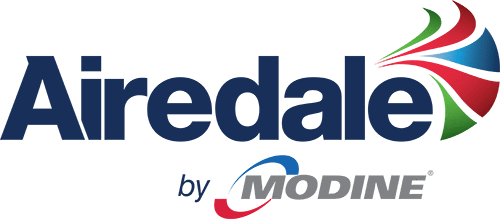Cool Wars: Who won the battle for data centre cooling supremacy?

14th October is a red letter day for conflict. On this day in 1066 William the Conqueror defeated the English forces of Harold II in the Battle of Hastings. And on October 14th 1322 Robert the Bruce defeated King Edward II at Byland, forcing Edward to accept Scotland’s independence.
This historical precedence set the scene nicely for Airedale’s “Cool Wars” debate with Liquid Cooling providers Asperitas, on 14th October 2020. The backdrop couldn’t be better; the data centre industry is in warp-drive to keep up with skyrocketing demand, but is also coming under increased pressure to minimise its environmental impact. Cooling providers in the data centre space are feeling this pressure too; to be as energy efficient as possible without compromising on availability. Amidst all this dynamism in the market, liquid cooling as a technology is not just knocking on the data centre cooling door, it’s threatening to knock it down. Traditional air cooled system providers like Airedale are looking over their shoulders, but are confident that with continued innovation, they will not be displaced as the technology of choice within most facilities. With all this in mind…would the cold war turn hot?
The opening exchanges certainly had their moments. It is clear that the two companies view each other (not just other vendors of the same technology) as their competition in the data centre market. Rolf Brink, CEO of Asperitas, opened by stating that:
“Immersion is the most efficient method of IT platform cooling.”
He went on to argue that with the current evolution in chip densities, the industry is becoming more and more difficult for air cooling. Matt Evans of Airedale countered by proposing that it is “a fact” that the entirety of the data centre landscape, barring two examples, are still using air cooling…and that this was “not a coincidence”.
So, early blows landed by both parties. It was time for the moderator, Mark Acton of Ekkosense, to step in and propose a motion that:
“Immersion cooling is more energy efficient and will therefore overtake air-based systems as the preferred cooling method in most large datacentres by 2030”.
Rolf was happy to back this claim up, pointing to CAPEX savings with immersion systems due to reduced equipment requirements. This, coupled with lower energy overheads as a result of being able to work with much higher ambient temperatures (and therefore delivering greater free cooling opportunities), made a compelling case for immersion cooling. He also pointed to the fact that, with climate change impacting data centres’ ability to take advantage of free cooling, immersion cooling’s “climate independence” was a real advantage.
Matt conceded that, on paper at least, immersion systems are more efficient. However he did point to the face that large colocation environments that Airedale are working in are employing supply air temperatures above 30 degrees Celsius in some cases. Given the free cooling opportunities with air and water conditions based on these air-on temperatures, mechanical power used by the cooling system is greatly reduced.
Matt went on to point out that inherent redundancy built in to air-cooling plant deployment (n + X) also allows equipment to run in nominal operation at a reduced speed, therefore bringing system efficiencies extremely close to those enjoyed by facilities with immersion cooling employed.
These opening salvos were followed by a discussion on IT developments and requirements; increasing chip and rack densities, ASHRAE TC9.9 recommendations, server A-ratings and reliability X Factors.
Matt went for the jugular by stating his view that rack densities will not increase sufficiently enough, in large colocation data centres at least, to mandate a liquid-cooling solution. With 25kW not realistic in a 24U cabinet in this industry before 2030, Matt proposed that Asperitas were offering “a great solution to a problem that doesn’t actually exist”. This was, naturally, rebuked by Rolf who stated that Asperitas were indeed working with applications with 2kW per chassis and that there is “a huge market that are not even considering air cooling anymore”.
Discussions around cost followed, with Matt claiming that from a CAPEX perspective, air based cooling systems are cheaper to install, partly as a result of liquid-based systems still being “new” in the market but also because cooling densities of CRAC units are so high in a relatively small footprint. Rolf did agree to some extent, pointing to the fact that many sites today are brownfield with existing air cooling infrastructure, but that this will change when greenfield sites start designing for purpose with liquid cooling in mind.
Then came a point from Rolf around heat re-use, with the point being made that due to the operating conditions and efficiency of liquid cooling, a much higher grade of heat can be extracted from the data centre. Both participants agreed however, that finding a customer for this heat is not always straight forward. Rolf was more optimistic about its near-future potential however, stating that once the data centre infrastructure is in place across Europe, the utilities etc will follow.
Then came the convergence of opinion. Both Rolf and Matt both agreed that a combination of technologies will need to be considered going forward. Certain applications, like high performance computing and edge data centres, will certainly need to consider liquid cooling in the near future, due to high chip densities and for edge, a theoretically reduced maintenance requirement.
What is clear is that at the moment there is plenty of MW to go around. What’s also clear is that working practises within the data centre industry will need to evolve as we take a bigger proportion of the world’s resources and also in turn scrutiny.
With cooling, both Rolf and Matt agree that it is certainly a case of horses for courses; there is room for both technologies in the market. It should not be forgotten that the tail shouldn’t wag the dog… it’s the IT companies who will drive the market and the requirements, not the cooling providers. With these evolving requirements a degree of collaboration and indeed interdependency will be present between air and liquid cooling providers as hybrid scenarios become more prevalent. As engineers, we are obsessed with solving problems, so a fitting end to this writeup would be one of Matt’s closing comments:
“At the end of the day it’s not all about one is better than the other. We wouldn’t be good engineers if we were just trying to shoehorn the same thing into every single solution. That’s not how we work as an industry”
So, not so much a “war” as a dialogue between two companies who both want the same thing; an industry that supports the planet’s growing thirst for data while not being detrimental to its survival.





